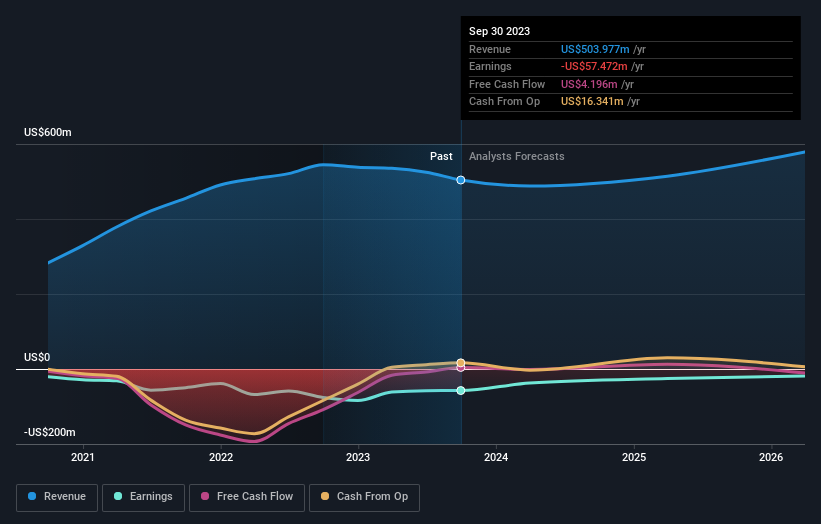While BARK, Inc. (NYSE:BARK) might not have the largest market cap around , it led the NYSE gainers with a relatively large price hike in the past couple of weeks. The recent rally in share prices has nudged the company in the right direction, though it still falls short of its yearly peak. As a stock with high coverage by analysts, you could assume any recent changes in the company’s outlook is already priced into the stock. But what if there is still an opportunity to buy? Let’s take a look at BARK’s outlook and value based on the most recent financial data to see if the opportunity still exists.
View our latest analysis for BARK
Is BARK Still Cheap?
The stock is currently trading at US$0.87 on the share market, which means it is overvalued by 28% compared to our intrinsic value of $0.67. This means that the buying opportunity has probably disappeared for now. If you like the stock, you may want to keep an eye out for a potential price decline in the future. Given that BARK’s share is fairly volatile (i.e. its price movements are magnified relative to the rest of the market) this could mean the price can sink lower, giving us another chance to buy in the future. This is based on its high beta, which is a good indicator for share price volatility.
What kind of growth will BARK generate?

Investors looking for growth in their portfolio may want to consider the prospects of a company before buying its shares. Buying a great company with a robust outlook at a cheap price is always a good investment, so let’s also take a look at the company's future expectations. With profit expected to grow by 75% over the next couple of years, the future seems bright for BARK. It looks like higher cash flow is on the cards for the stock, which should feed into a higher share valuation.
What This Means For You
Are you a shareholder? BARK’s optimistic future growth appears to have been factored into the current share price, with shares trading above its fair value. At this current price, shareholders may be asking a different question – should I sell? If you believe BARK should trade below its current price, selling high and buying it back up again when its price falls towards its real value can be profitable. But before you make this decision, take a look at whether its fundamentals have changed.
Are you a potential investor? If you’ve been keeping an eye on BARK for a while, now may not be the best time to enter into the stock. The price has surpassed its true value, which means there’s no upside from mispricing. However, the optimistic prospect is encouraging for BARK, which means it’s worth diving deeper into other factors in order to take advantage of the next price drop.
If you'd like to know more about BARK as a business, it's important to be aware of any risks it's facing. At Simply Wall St, we found 2 warning signs for BARK and we think they deserve your attention.
If you are no longer interested in BARK, you can use our free platform to see our list of over 50 other stocks with a high growth potential.
Valuation is complex, but we're here to simplify it.
Discover if BARK might be undervalued or overvalued with our detailed analysis, featuring fair value estimates, potential risks, dividends, insider trades, and its financial condition.
Access Free AnalysisHave feedback on this article? Concerned about the content? Get in touch with us directly. Alternatively, email editorial-team (at) simplywallst.com.
This article by Simply Wall St is general in nature. We provide commentary based on historical data and analyst forecasts only using an unbiased methodology and our articles are not intended to be financial advice. It does not constitute a recommendation to buy or sell any stock, and does not take account of your objectives, or your financial situation. We aim to bring you long-term focused analysis driven by fundamental data. Note that our analysis may not factor in the latest price-sensitive company announcements or qualitative material. Simply Wall St has no position in any stocks mentioned.
About NYSE:BARK
BARK
A dog-centric company, provides products, services, and content for dogs.
Excellent balance sheet and fair value.
Similar Companies
Market Insights
Community Narratives




